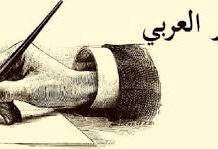Birth and Development of Arabic Prose
Birth and Development of Arabic Prose
Birth and Development of Arabic Prose
‘Prose’ is generally defined as the language in which a person speaks without rhythm in his daily life. The language of conversation is often incoherent and varies from person to person or region to region according to the mode of their expression. But in regard to prose literature, when a subject or context is systematically expressed in a way that impresses the listener, it develops into a literary category. There is literature in all the languages of the world – either written or oral. Sadly, prose literature was not given as much priority as poetry in ancient times. So the provision of preserving prose literature in writing form started much later than poetry literature.
The Arabic language, one of the earliest languages in the world is rich in both prose and poetry. The tradition of creating literature in this language began in the pre-Islamic era but that era is famous only for poetry literature. Side by side with poetry literature, though in less quantity, prose literature, was also sprouted in this pre-Islamic era. It is important to note that the pre-Islamic poets not only gave birth to poetry but also made it a great branch of literature. It is a pity that the prose literature of this age had not gained as much importance in the pages of history as the poetry literature. But it is a matter of sorrow that all the literature at that time was composed orally and was passed down orally from generation to generation. This is because the prose literature of the pre-Islamic period did not get any importance. As a result, the prose composition of this age has been lost forever. However, some of the prose samples can be found in some of the later collections. From these samples, we can get some clues as to the development of prose literature in the pre-Islamic era. The prose of the pre-Islamic period developed into three genres – war stories, proverbs, and narratives. These are briefly discussed below:
War Stories
In the pre-Islamic period, the historical literature of the northern region of Arabia was generally known as ‘Ayam al-Arab’, meaning the stories of the war. The people living in Arabia at that time were divided into different groups or clans, and there were frequent clashes, conflicts, and wars among them. And the stories of those wars were circulated orally and people listened to them with eagerness. Some of them added the role of their deity to the stories of the wars and some of them added aspects of their socio-cultural and religious activities to the stories. Those stories were usually arranged in spoken prose and they were passed down through generations. These descriptions were rich in hereditary information and reflected the characteristics of the tribes they belonged to. The social, religious, and political views were also reflected in these descriptions. The description of Ayam was characterized by the glorification of one’s own tribe or clan and the condemnation of the opposing tribe. In fact, for the individual members of a tribe at that time, it was necessary to know the personal qualities and adventures of the former chiefs of the tribe. For this purpose, every member of the tribe liked and listened attentively to the narratives of that war. Some of them wrote poems about the adventures of the tribes and while reciting those poems, they explained some episodes in prose and thus enlivened the story. The language of such prose stories was mutually compatible with its own content. The dimension of descriptions was functional and self-explanatory. The central theme of such a story was a detailed account of a particular battle or event. Each tribe had its own poets who wrote poems on the adventures and glorious deeds of their respective tribes and they were recited in tribal gatherings with explanatory notes in prose. Such descriptions continued to circulate among the masses until a more fresh and memorable event took place after that incident. Ayam’s stories were valued as social entertainment and were regarded as the collective property of the entire tribe. These stories have been circulating in people’s mouths for centuries without any change. But sadly, the narrators had no historical consciousness. Therefore, they did not take any steps to preserve them in writing.
Proverbs
In the pre-Islamic era, Arabic prose also developed and spread through proverbs. Proverbs were regarded as the product of the real experience of the wise people because they contained the deepest truths of life. Most of the proverbs were instructive and pre-Islamic speakers and poets used proverbs in their writings consistently. Even on the battlefield, poets resorted to proverbs to encourage their soldiers. Proverbs were popular by word of mouth in the early days, although they were later transcribed. Some examples of proverbs prevalent in the Pre-Islamic Era are as follows:
‘Nothing but iron can affect iron. ’
‘People fall because of greed. ’
‘Man is the slave to what he thinks.’
We find a chapter on proverbs in Ibn Abdur Rabbi’s encyclopedia. He added this chapter to the encyclopedia to understand the use of proverbs. Al-Maydani collected and narrated many proverbs, phrases, moral sayings, etc., which were prevalent in Arab society. Through these proverbs, we can learn about the lifestyle and cultural activities of the pagan Arabs. Proverbs have been interpreted differently by different scholars. The interpretation of some proverbs seems to be completely different from the original meaning. Scholars of later times tried to find out the true meaning of proverbs.
Narratives, Traditions, Legends, etc
The Arabs of the pre-Islamic period had a strong memory to keep in mind the long narratives, anecdotes, traditions, etc. They memorized them from generation to generation. Later, these traditions played an important role in the development of Arabic prose. Legends also played an important role in the development of Arabic prose literature in the pre-Islamic period. Legends are fictional stories orally composed to entertain the audience. Of course, some were based on real events. They were preserved in various literary and historical works written during the Abbasid Caliphate, especially in Abul Faraj Isfahani’s ‘Kitabul Aghani’. There were some storytellers at the time. They told various stories at markets, fairs, or public gatherings and earned money for their livelihood. For example, the Ukaj fair can be mentioned. It was the center of the social, political, and literary life of the Arabs. People from different tribes gathered there during the fair. The storytellers and the public speakers told different stories during the Ukaj fair. Among such speakers mention may be made of Kush bin Saidah al-Yadi, Amar bin Madikarib, and some others.
The Prose of the Kahhins
In the pre-Islamic era, there was a class of people called ‘Kahhins’ who claimed to have invisible knowledge and thus they claimed to have the power of foretelling. They foretold the fate of human beings by looking at their hands, shapes, and faces. They were idolators. They presented their speeches in a language that was rhythmic, obscure, ambiguous, complex, and mysterious. Among the famous Kahhins of the Jahili era were Samla Ibn Hayya, Sawad Ibn Qarib, Mamur Al-Harisha, Gayatala, and some others. They also contributed to the development of Arabic prose by means of their prose-like composition.
With the advent of Islam in the seventh century, the language of the Qur’an and Hadith also played a significant role in the development of Arabic prose. This is because the language of the Koran was a wonderful combination of prose and verse. Therefore the people were easily influenced by the language of the Koran and thus they contributed much to the development of Arabic prose literature. The prose of the Hadith added clarity, simplicity, and universality to Arabic prose. 0 0 0.
Birth and Development of Arabic Prose
Birth and Development of Arabic Prose
Read More: A Brief History of Arabic Literature: Early Islamic Period (622 AD-661 AD)
Birth and Development of Arabic Prose
N.B. This article ‘Birth and Development of Arabic Prose’ originally belongs to the book entitled ‘A Brief History of Arabic Literature: Pre-Islamic Period (500 AD-622 AD) by Menonim Menonimus. Birth and Development of Arabic Prose
Related Searches:
Books of Literary Criticism by M. Menonimus:
- World Short Story Criticism
- World Poetry Criticism
- World Drama Criticism
- World Novel Criticism
- World Essay Criticism
- Indian English Poetry Criticism
- Indian English Poets and Poetry Chief Features
- Emily Dickinson’s Poetry-A Thematic Study
- Walt Whitman’s Poetry-A Thematic Study
- Critical Essays on English Poetry
- Tawfiq al-Hakim’s Novel: Return of the Spirit-An Analytical Study
- Tawfiq al-Hakim’s Novel: ‘Yawmiyyat Naib Fil Arayaf’-An Analytical Study
- Analytical Studies of Some Arabic Short Stories
- A Brief History of Arabic Literature: Pre-Islamic Period (500 AD-622 AD)
- A Brief History of Arabic Literature: Early Islamic Period (622 AD-661 AD)
- Birth and Development of Arabic Prose











